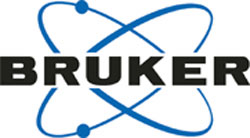 GOTHENBURG, Sweden - At the 9th International CBW Protection Symposium, the Chemical, Biological, Radiation and Nuclear (CBRN) detection business of Bruker Daltonics today announces significant new options and capabilities for its RAID-AFM Automated Facility Monitor. The RAID-AFM product line is designed to monitor large buildings, facilities and key infrastructure for accidents or attacks involving toxic industrial chemicals (TIC) or chemical warfare agents (CWA). The RAID-AFM is of particular value in large buildings, such as government, financial centers, hotels, etc., with targeted deployment in building lobbies and air intake locations. The fixed-site autonomous RAID-AFM is complemented by Bruker's handheld RAID-M chemical detectors for facility walk-throughs and problem localization. Bruker Daltonics' RAID(TM)-AFM is based on the Company's successful line of RAID(TM) ion mobility spectrometers (IMS) that feature excellent detection capabilities and sensitivity, combined with superior false positive rejection compared to other commercial IMS systems or technologies. The RAID-AFM can detect andentify up to 20 chemical warfare agents and toxic industrial chemicals with short response times at IDLH (Immediate Danger to Live and Health) levels. It is designed to monitor critical infrastructure and larger buildings on a continuous basis 24 hours a day, and 365 days a year, without operator intervention and with minimal annual service requirements. The RAID-AFM represents state-of-the-art technology to protect key facilities from chemical accidents or potential terrorist attacks using weapons of mass destruction. This new stationary detector meets the evolving demand for a small, affordable instrument that is compatible with other typical building infrastructure, along with web-based diagnostics and control capabilities.New options introduced here include:
GOTHENBURG, Sweden - At the 9th International CBW Protection Symposium, the Chemical, Biological, Radiation and Nuclear (CBRN) detection business of Bruker Daltonics today announces significant new options and capabilities for its RAID-AFM Automated Facility Monitor. The RAID-AFM product line is designed to monitor large buildings, facilities and key infrastructure for accidents or attacks involving toxic industrial chemicals (TIC) or chemical warfare agents (CWA). The RAID-AFM is of particular value in large buildings, such as government, financial centers, hotels, etc., with targeted deployment in building lobbies and air intake locations. The fixed-site autonomous RAID-AFM is complemented by Bruker's handheld RAID-M chemical detectors for facility walk-throughs and problem localization. Bruker Daltonics' RAID(TM)-AFM is based on the Company's successful line of RAID(TM) ion mobility spectrometers (IMS) that feature excellent detection capabilities and sensitivity, combined with superior false positive rejection compared to other commercial IMS systems or technologies. The RAID-AFM can detect andentify up to 20 chemical warfare agents and toxic industrial chemicals with short response times at IDLH (Immediate Danger to Live and Health) levels. It is designed to monitor critical infrastructure and larger buildings on a continuous basis 24 hours a day, and 365 days a year, without operator intervention and with minimal annual service requirements. The RAID-AFM represents state-of-the-art technology to protect key facilities from chemical accidents or potential terrorist attacks using weapons of mass destruction. This new stationary detector meets the evolving demand for a small, affordable instrument that is compatible with other typical building infrastructure, along with web-based diagnostics and control capabilities.New options introduced here include:
- The RAID-AFM is now available optionally as a bi-functional fully integrated NC (nuclear & chemical) system that can also detect radiological and nuclear threats, including potential attacks using so-called dirty bombs (conventional explosives with radioactive material), in addition to TIC and CWA chemical detection. This combined NC-capability makes the RAID-AFM unique and particularly convenient for many installations.
- The RAID-AFM now is offered also with an optional non-radioactive ionization source, so there are no license requirements for radioactive sources whatsoever in any jurisdiction or country. In many countries, the RAID-AFM with its standard very low activity ion source is exempt from radiation safety requirements and requires no registration, record keeping or special disposal even in its standard version. In other countries, even the standard very low activity source does require additional administrative steps, and a non-radioactive source is more convenient.
Subscribe to the DPJ Weekly Brief newsletter:
Subscribe
